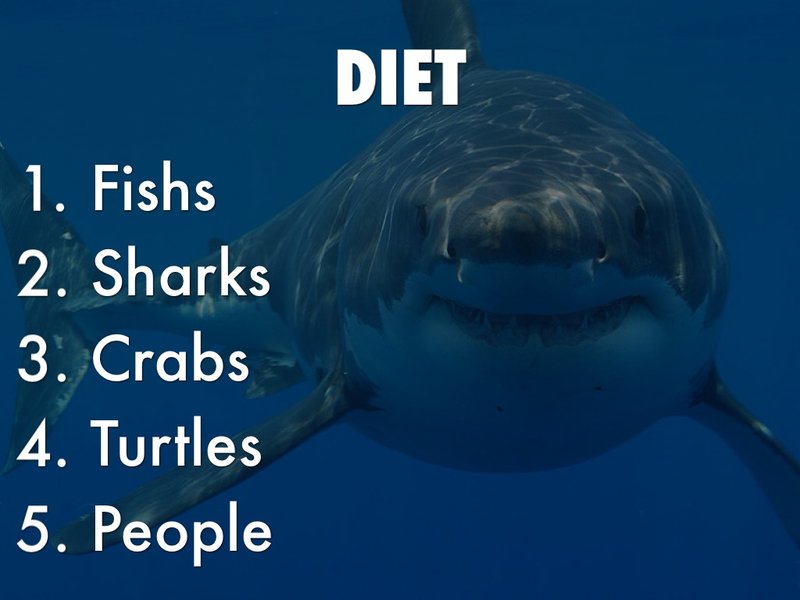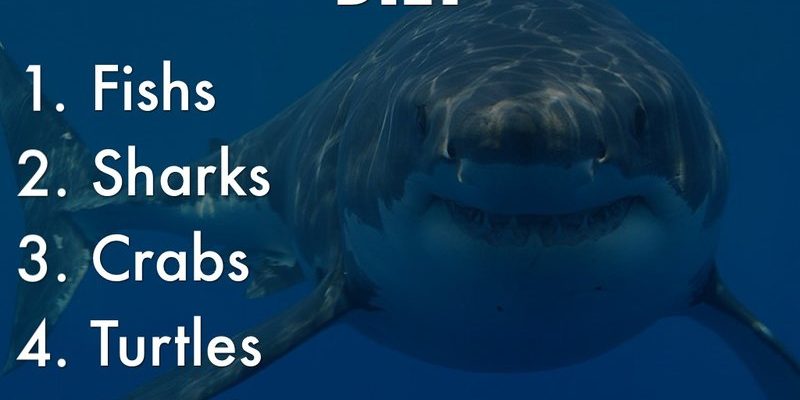
Great white sharks are not just mindless eating machines. They have specific preferences, and their diet varies based on their age, size, and even the region they inhabit. Imagine a teenager who suddenly starts getting into sushi while their younger sibling is still munching on chicken nuggets. It’s similar to how these sharks evolve in their eating habits as they grow older. Ready to jump into the jaws of knowledge? Let’s explore!
What Do Great White Sharks Eat?
Great white sharks are apex predators, which means they sit at the top of the food chain. Their diet is quite diverse, primarily consisting of larger marine animals. These include:
- Seals: This is their favorite meal! Seals are rich in fat, which provides energy that helps sustain the sharks during long swims.
- Fish: They also enjoy a variety of fish, including tuna and other large fish species. These are often hunted in schools.
- Turtles: An occasional sea turtle can make for a hearty meal, especially for larger sharks.
- Marine mammals: In addition to seals, they might snatch up dolphins and other marine mammals from time to time.
As juveniles, great whites tend to stick to smaller fish and invertebrates. It’s like how kids first start with chicken nuggets before moving on to more adventurous foods like sushi. As they grow, their preferences change, and they start targeting larger, more calorically dense prey.
Hunting Techniques of Great White Sharks
Ever watched a documentary showing a great white shark breaching the surface? It looks like a mighty creature leaping out of the water to catch its prey. This hunting technique, called “breaching,” is one of the many ways they catch their food. Here’s how it works:
1. Stealthy Approach: Great whites are incredibly stealthy. They can swim slowly and quietly, reducing the chance of startling their prey. Imagine a cat sneaking up on a mouse—that’s how they move through the water, almost undetected.
2. Ambush: Once they get close enough, they can launch a sudden attack. Sometimes, they’ll even breach the surface, which involves jumping out of the water to catch seals lounging on the beach. It’s an impressive sight!
3. Powerful Bite: With rows of razor-sharp teeth, they can deliver a powerful bite to their prey. Interestingly, they often take just one bite to test their food before finishing it off. It’s like sampling a dish before diving in for the main course.
These techniques show how adaptive and intelligent great white sharks are when it comes to feeding. They aren’t just brute force; there’s a strategy behind every hunt.
Feeding Behavior and Patterns
Great whites have specific feeding behaviors that change based on the time of year, availability of prey, and even their own growth stages. For example, during the migration of seals, these sharks will adjust their feeding patterns to capitalize on this bounty.
One interesting aspect is how great whites can go long periods without eating. They can fast for weeks or even months, especially after a big meal. It’s like going to an all-you-can-eat buffet and then deciding to skip dinner for a while. This adaptation helps them survive when food is scarce.
They also tend to feed more in specific areas known as “shark hotspots,” where prey is abundant. These can be coastal waters or regions with upwellings that bring nutrient-rich waters to the surface. Think of it as finding a great restaurant where all your favorite dishes are available.
Impact of Environment on Feeding Habits
The environment plays a huge role in shaping the diet and feeding habits of great white sharks. Factors like water temperature, currents, and the presence of prey species can make a big difference. For instance, during the warmer months, you’ll often find them near coastal regions where seals are more active.
Different locations also contribute to variations in their diet. In some areas, they might feast on seals, while in others, they could target schools of fish. It’s much like how a person’s diet might change when moving to a new city. New options and flavors can lead to different eating habits.
Climate change is also affecting their feeding behavior. As ocean temperatures rise, the migration patterns of seals and fish are shifting. This can impact how often and where great whites find their food. It’s a reminder of how interconnected everything is in nature.
How Great White Sharks Digest Their Food
Once a great white shark has caught its prey, the next step is digestion. Here’s where things get interesting. Their digestive system is highly efficient. Sharks have a special organ called the spiral valve, which helps them absorb nutrients more effectively.
After a meal, it can take a shark several days to fully digest its food. During this time, their body breaks down the meal, extracting essential nutrients and energy. They’re like efficient garbage disposals of the ocean, ensuring that nothing goes to waste.
The digestive process is also why these sharks can fast for extended periods. They store energy from previous meals, which is why they don’t need to eat constantly. Just think about how people sometimes save up calories for a big meal. It’s similar for these sharks!
Threats to Their Food Sources
While great white sharks are powerful predators, they face challenges from various threats that can impact their food sources. Overfishing is one major concern, as it depletes the populations of seals and fish they rely on. This can leave sharks with fewer options and force them to search further for food.
Pollution is another issue. Chemical runoff and plastic waste can contaminate their prey, leading to health issues for the sharks. Imagine eating food that’s been tainted—you wouldn’t feel good about it. It’s the same for sharks!
Conservation efforts are crucial. By protecting their habitats and regulating fishing practices, we can help ensure that great white sharks have the food they need to thrive. It’s all about keeping the balance in the ocean.
Great white sharks are incredible creatures with complex feeding habits that reflect their adaptability and intelligence. From their varied diet of seals and fish to their impressive hunting techniques, these sharks have evolved to be efficient predators.
Understanding their diet helps us appreciate the role they play in the marine ecosystem. They’re not just fearsome predators; they’re a vital part of ocean health. By protecting their habitats and ensuring their food sources are stable, we can help maintain the balance in our oceans.
So, the next time you think about great white sharks, remember that there’s more beneath the surface. They’re fascinating animals with a diet that reflects their unique place in the underwater world. Let’s continue to learn about and protect these magnificent animals for generations to come.

